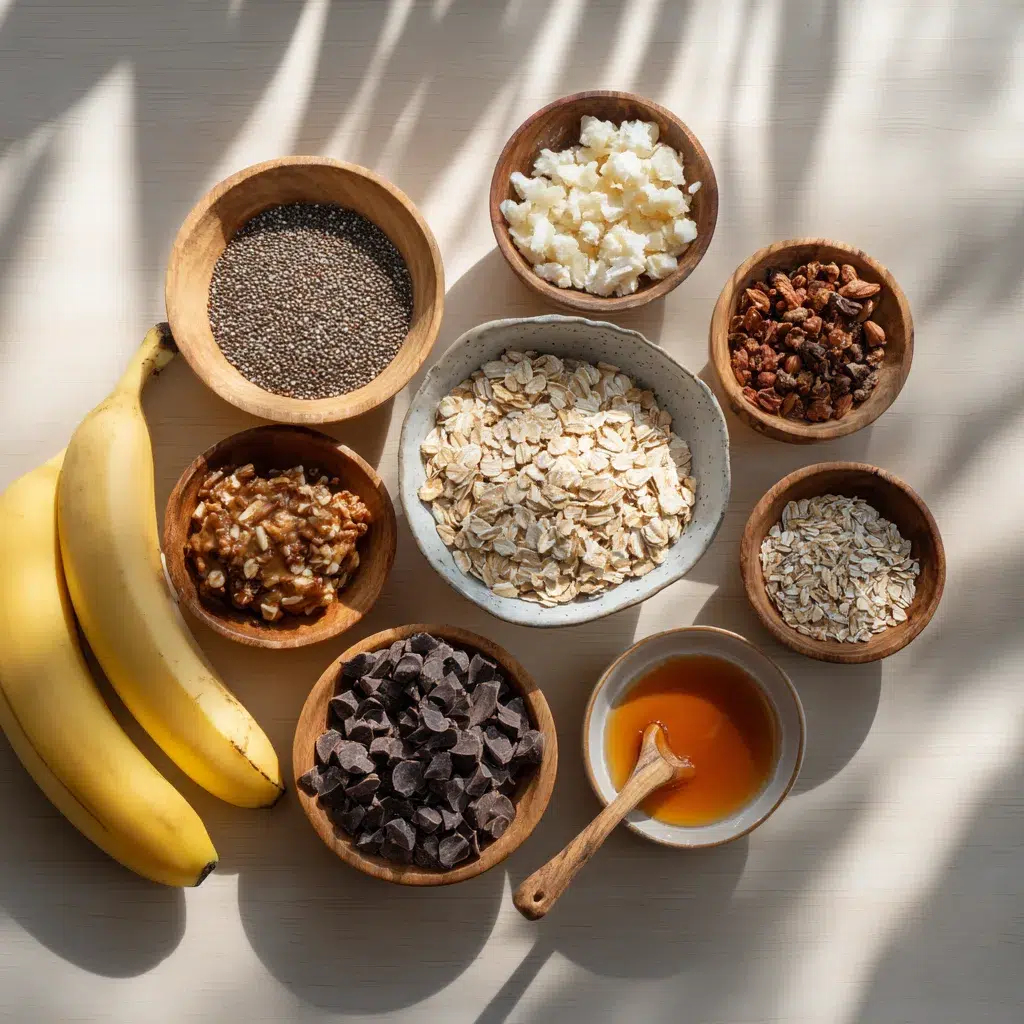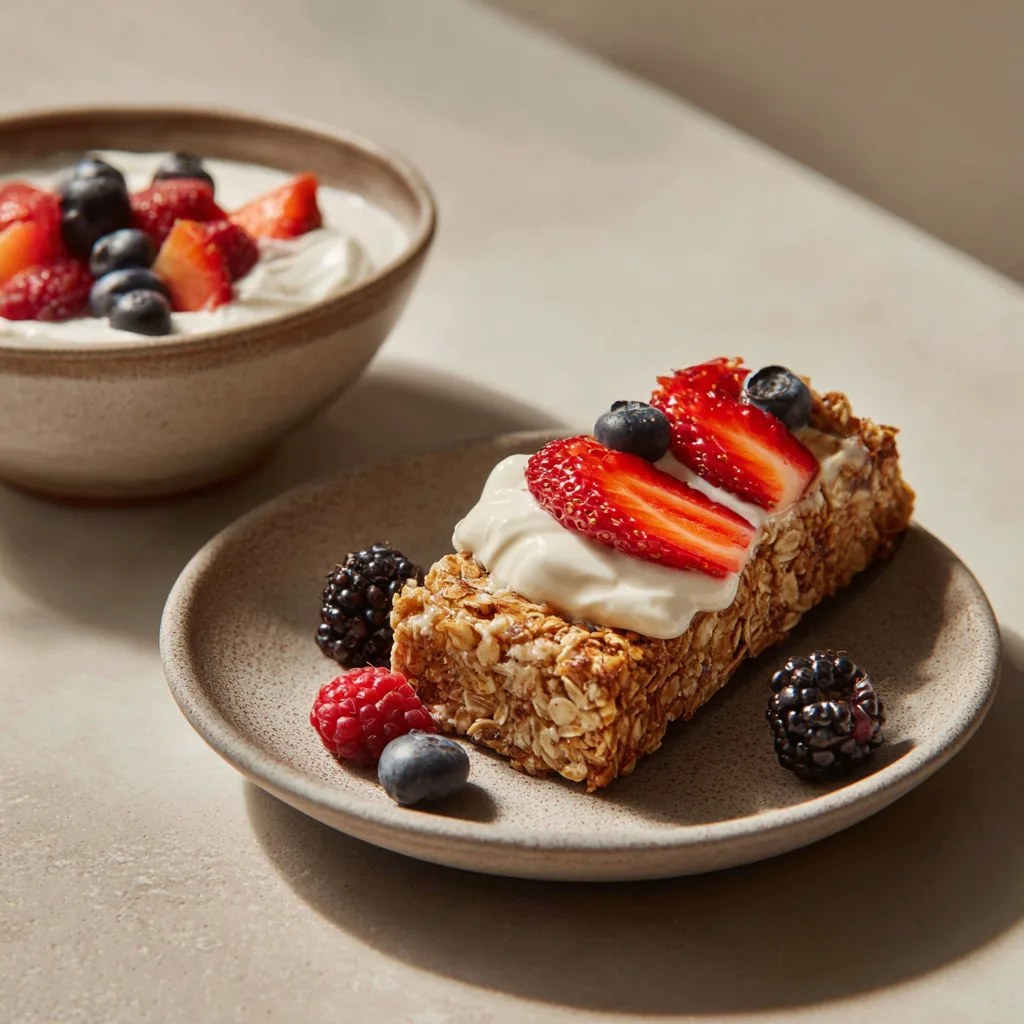If you’ve ever skipped breakfast because you were running late, you’re not alone. But grabbing something quick doesn’t have to mean sacrificing nutrition. That’s where high-fiber, high-protein breakfast bars come in. These homemade bars aren’t just convenient—they’re loaded with the nutrients your body needs to power through the morning. In this article, you’ll discover why these bars are a smart choice, how to make your own, and how to store and serve them for maximum flavor and benefit.
Let’s dig into why they’ve become a go-to breakfast for busy families and health-conscious food lovers alike.
Why High-Fiber, High-Protein Breakfast Bars Are the Perfect Start
The Health Benefits of Fiber and Protein in the Morning
We’ve all heard that breakfast is the most important meal of the day—but what you eat is just as important as when you eat it. A meal that’s rich in both fiber and protein does more than fill you up—it helps your body perform at its best. Fiber supports digestive health and keeps you feeling full longer, while protein provides sustained energy and helps regulate blood sugar levels throughout the day.
When combined, these nutrients form the perfect duo. They work together to stabilize appetite, reduce cravings, and promote steady energy—without the crash you get from sugary cereals or pastries. Adding ingredients like oats, flaxseeds, and chia seeds gives your bars natural sources of both nutrients, keeping them wholesome and satisfying.
At Alissa Recipes, we believe in meals that are both practical and powerful. These bars deliver on both fronts—just like our Mango Oatmeal Smoothie, which also combines fiber-rich fruit and protein-packed ingredients into one easy option.
Why Breakfast Bars Work for Busy Mornings
Whether you’re a parent juggling school lunches or a professional trying to make your 8:30 a.m. meeting, mornings can be chaotic. That’s why having a stash of ready-to-eat high-fiber, high-protein breakfast bars is a total game changer.
They’re compact, portable, and ideal for meal prep. Just bake or press a batch over the weekend, refrigerate or freeze them, and you’ll have breakfast covered for the week. And unlike most store-bought bars, homemade versions let you control what goes in—no artificial flavors, refined sugar bombs, or mystery oils.
Plus, they’re a hit with kids. You can shape them into mini bars or bites and sneak in flax, nuts, or dried fruit. For a well-rounded, nutritious start, pair a bar with a side of Greek yogurt or a small smoothie like our Berry and Banana Smoothie. Quick, easy, and way more nourishing than a drive-thru pastry.
What Makes a Great High-Fiber, High-Protein Breakfast Bar?
Best Ingredients to Use
When it comes to making breakfast bars that actually support your health goals, the ingredients matter. The best high-fiber, high-protein breakfast bars start with a base that’s rich in natural fiber, like rolled oats, chia seeds, flaxseed, or even psyllium husk. These ingredients bulk up the bars, support digestion, and help keep blood sugar levels stable.
Next comes the protein. Nut butters like almond or peanut butter are not only delicious but also rich in healthy fats and protein. Add-ins like protein powder, hemp seeds, pumpkin seeds, and Greek yogurt powder can boost the protein content even further. Use a natural binder such as mashed bananas, dates, or a touch of honey to hold everything together without relying on refined sugar.
For variety, toss in dried fruits, unsweetened coconut, or dark chocolate chips. Not only do these extras enhance taste, but they also add texture and a nutrient boost. Homemade bars also let you avoid additives found in store-bought versions—giving you full control over what you’re feeding yourself and your family.
We often use a variation of these ingredients in our No-Bake Peanut Butter Pie Recipe, which uses wholesome pantry staples to create something indulgent yet better-for-you.
Avoid These Common Mistakes
Even with good ingredients, it’s easy to make a breakfast bar that’s too dry, too sticky, or not satisfying. One common mistake is skimping on healthy fats. While it might seem smart to reduce fat, bars made without nut butters or coconut oil tend to crumble or dry out. Healthy fats also slow digestion, which helps you stay full longer.
Another pitfall? Using sweeteners excessively. Maple syrup, honey, or agave should be used in moderation. Over-sweetening not only spikes blood sugar but also masks the flavor of the whole ingredients. Also, make sure to balance dry and wet ingredients carefully. Too much protein powder or oats without enough moisture can lead to a dense, chalky bar.
To get more science-backed advice, we recommend checking out Mayo Clinic’s healthy snacking guide, which explains how to make choices that fuel your day.
For other simple, healthy ideas, explore our Orange Chia Smoothie—another recipe loaded with fiber, protein, and clean energy.
How to Make Your Own Bars at Home (Step-by-Step)

Simple Ingredients You Can Customize
One of the best things about making your own high-fiber, high-protein breakfast bars is the flexibility. Once you understand the base formula, you can create endless variations to suit your taste, dietary goals, or what’s already in your pantry.
Here’s a simple structure to follow:
Breakfast Bar Components and Options
| Component | Options |
|---|---|
| Fiber Base | Rolled oats, ground flaxseed, chia seeds |
| Protein Source | Nut butters, protein powder, Greek yogurt powder |
| Binder | Mashed bananas, dates, honey, maple syrup |
| Flavor Add-Ins | Cinnamon, vanilla extract, cocoa powder |
| Toppings (Optional) | Nuts, seeds, coconut flakes, dark chocolate chips |
Once mixed, you can either press the mixture into a baking dish and chill for a no-bake bar or bake at 350°F for 15–20 minutes until golden and firm. Then cool completely before slicing.
We use similar prep techniques in our Breakfast Sausage Casserole, another make-ahead recipe that simplifies mornings.
No-Bake vs Baked Bars: Which to Choose?
When deciding between baked and no-bake options, it really depends on your preference and time. No-bake bars tend to be softer, chewier, and easier to prep. They’re ideal if you want to avoid heating the kitchen or if you need something ultra-fast.
Baked bars, on the other hand, have a firmer texture and hold up better for transport. They also offer that toasty flavor that’s hard to resist. However, baked versions require precise balancing of moisture and cook time, or they risk becoming dry.
Either way, these bars keep well. Store no-bake bars in the fridge and baked ones in an airtight container. Many readers who enjoy our Almond Berry Smoothie love pairing it with a small slice of a baked breakfast bar for a fiber-rich, protein-packed morning meal.
Smart Storage and Creative Serving Ideas
How to Store Breakfast Bars for Maximum Freshness
Once you’ve made your high-fiber, high-protein breakfast bars, proper storage is key. If stored correctly, they can last a full week or even longer, making them a perfect meal prep solution. For no-bake bars, refrigerate them in an airtight container layered with parchment paper. They’ll stay fresh for up to 10 days.
Baked bars can be stored at room temperature for up to 5 days in a cool, dry place, as long as they’re in a tightly sealed container. For longer storage, both types of bars freeze well. Simply wrap individual bars in parchment paper and place them in a freezer-safe bag or container. You can grab one anytime for an instant snack, just like we suggest with our Healthy Vegetable Samosas which also freeze beautifully.
Pro tip: If you’re using nut butter as the base, bars may become a bit firm in the fridge. Let them sit at room temperature for 5 minutes before enjoying.
Creative Ways to Serve and Enjoy Your Bars
While breakfast bars are a grab-and-go staple, they’re also incredibly versatile. Here are a few delicious serving ideas:
-
With yogurt and fruit: Crumble a bar over Greek yogurt with fresh berries for a high-protein parfait.
-
As a smoothie topper: Add chopped bar chunks on top of a smoothie bowl. Our Strawberry Oatmeal Breakfast Smoothie pairs especially well with these flavors.
-
Drizzled with nut butter: Warm up a bar slightly and drizzle almond butter on top for an indulgent yet nutritious snack.
-
Cut into bites: Slice bars into bite-size pieces and serve on a platter with fruit for brunch or snack boards.
These bars are more than breakfast. They’re a lifestyle tool for better energy, digestion, and satiety — all with minimal fuss.
Frequently Asked Questions
Which protein bars are high in fiber?
Protein bars with ingredients like oats, chia seeds, flaxseed, and psyllium husk tend to be high in fiber. Look for bars with at least 5g of fiber per serving. Homemade options like the ones in this recipe offer more control over fiber content than store-bought bars, many of which contain additives and refined sugars.
What breakfast is high in fiber and protein?
A balanced breakfast that includes whole grains, lean protein, and healthy fats will be both high in fiber and protein. For example, a serving of these breakfast bars with Greek yogurt and fruit makes a powerful combination. Other great options include quinoa bowls, chia seed puddings, and smoothies with nut butter and oats.
What snacks are high in fiber and protein?
In addition to these breakfast bars, snacks like roasted chickpeas, hard-boiled eggs with whole-grain crackers, almond butter with apple slices, or hummus and veggie sticks all provide a good balance of fiber and protein. Planning snacks in advance helps prevent energy crashes during the day.
What is the healthiest protein bar for breakfast?
The healthiest protein bar is one that contains whole, natural ingredients with minimal added sugar. Aim for a bar that provides at least 5g of fiber, 10g of protein, and healthy fats. Making your own is the best way to ensure quality—like our recipe here, which includes oats, seeds, and nut butter for balanced nutrition.

Conclusion
High-fiber, high-protein breakfast bars are one of the easiest and most effective ways to stay energized and satisfied all morning long. Whether you’re meal prepping for the week or need a mid-afternoon snack, these bars deliver on taste, convenience, and nutrition. They’re endlessly customizable, budget-friendly, and far healthier than many packaged alternatives.
And best of all? You know exactly what’s inside. From the fiber-rich oats to the protein-packed seeds and nut butter, every ingredient works toward supporting your energy, digestion, and well-being. Try a batch this week—you’ll see just how powerful homemade can be.
Ready to upgrade your mornings? These bars are the perfect start.

